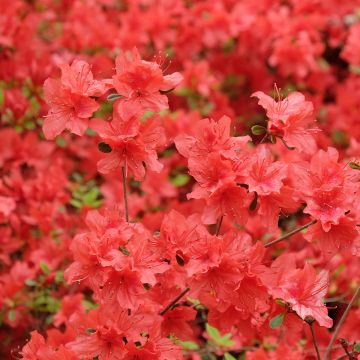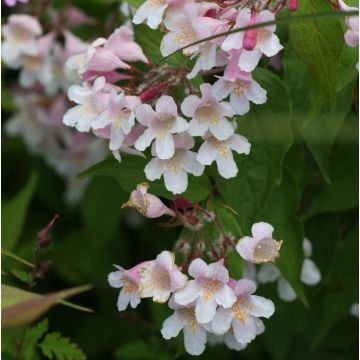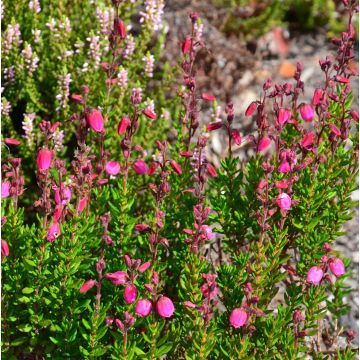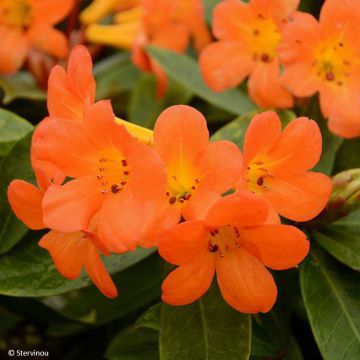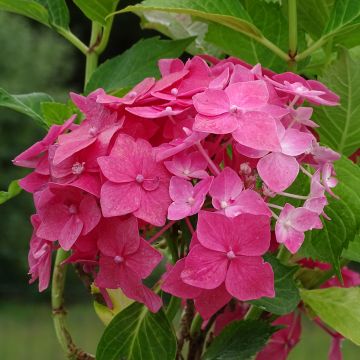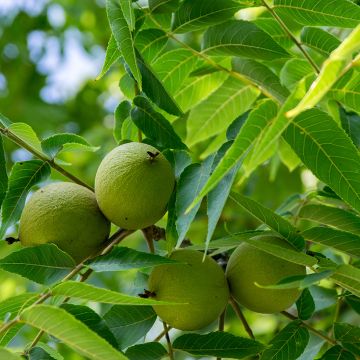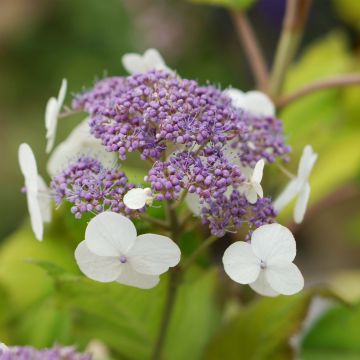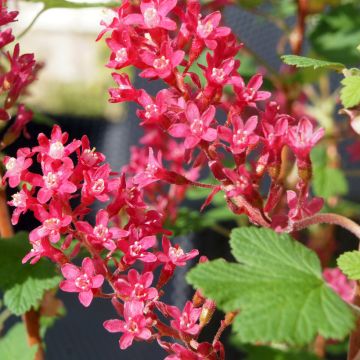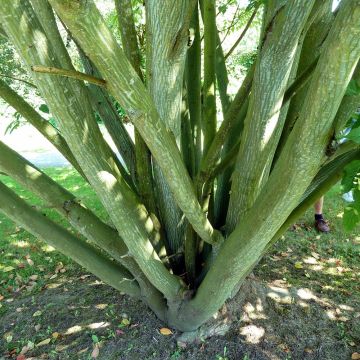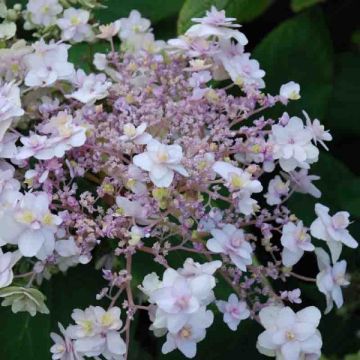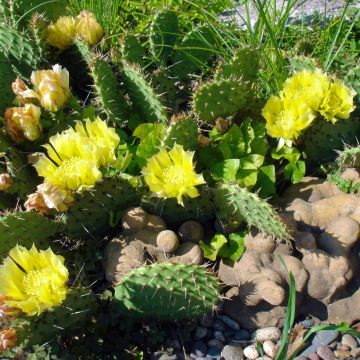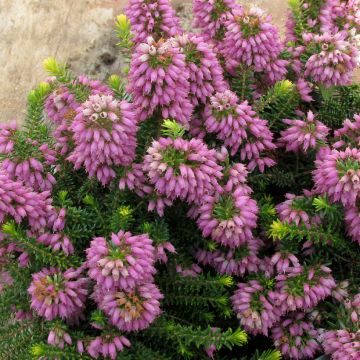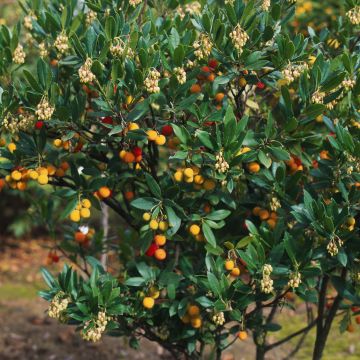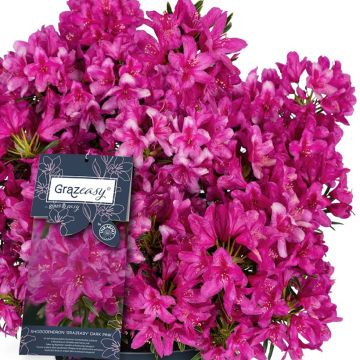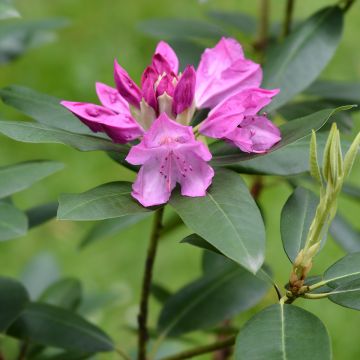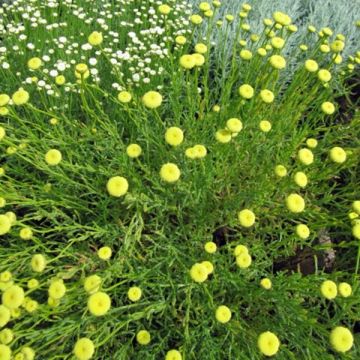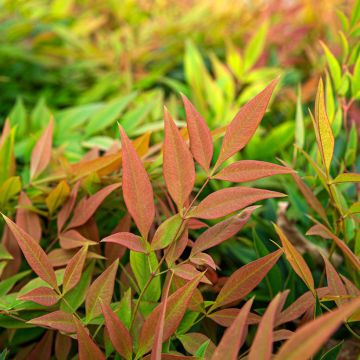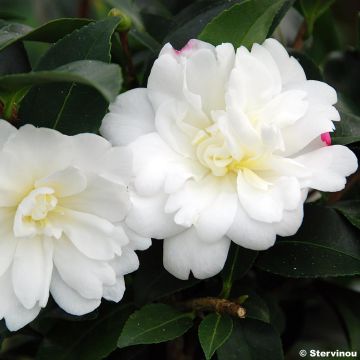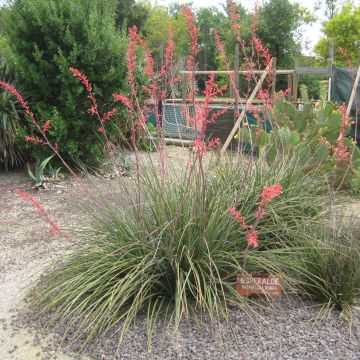Shipping country and language
Your country of residence may be:
Your country of residence is:
For a better user experience on our website, you can select:
Your shipping country:
-
Andorra
-
Austria
-
Belgium
-
Bulgaria
-
Canada
-
Chile
-
Croatia
-
Cyprus
-
Czechia
-
Denmark
-
Estonia
-
Finland
-
France
-
Germany
-
Greece
-
Hungary
-
Iceland
-
Ireland
-
Italy
-
Latvia
-
Lithuania
-
Luxembourg
-
Malta
-
Monaco
-
Netherlands
-
Poland
-
Portugal
-
Romania
-
Slovakia
-
Slovenia
-
Spain
-
Sweden
-
Switzerland
-
United Kingdom
We only deliver seed and bulb products to your country. If you add other products to your basket, they cannot be shipped.
Language:
-
French
-
German
-
Spanish
-
English
-
Italian
My Account
Hello
My wish lists
Log in / Register
Existing customer?
New customer?
Create an account to track your orders, access our customer service and, if you wish, make the most of our upcoming offers.
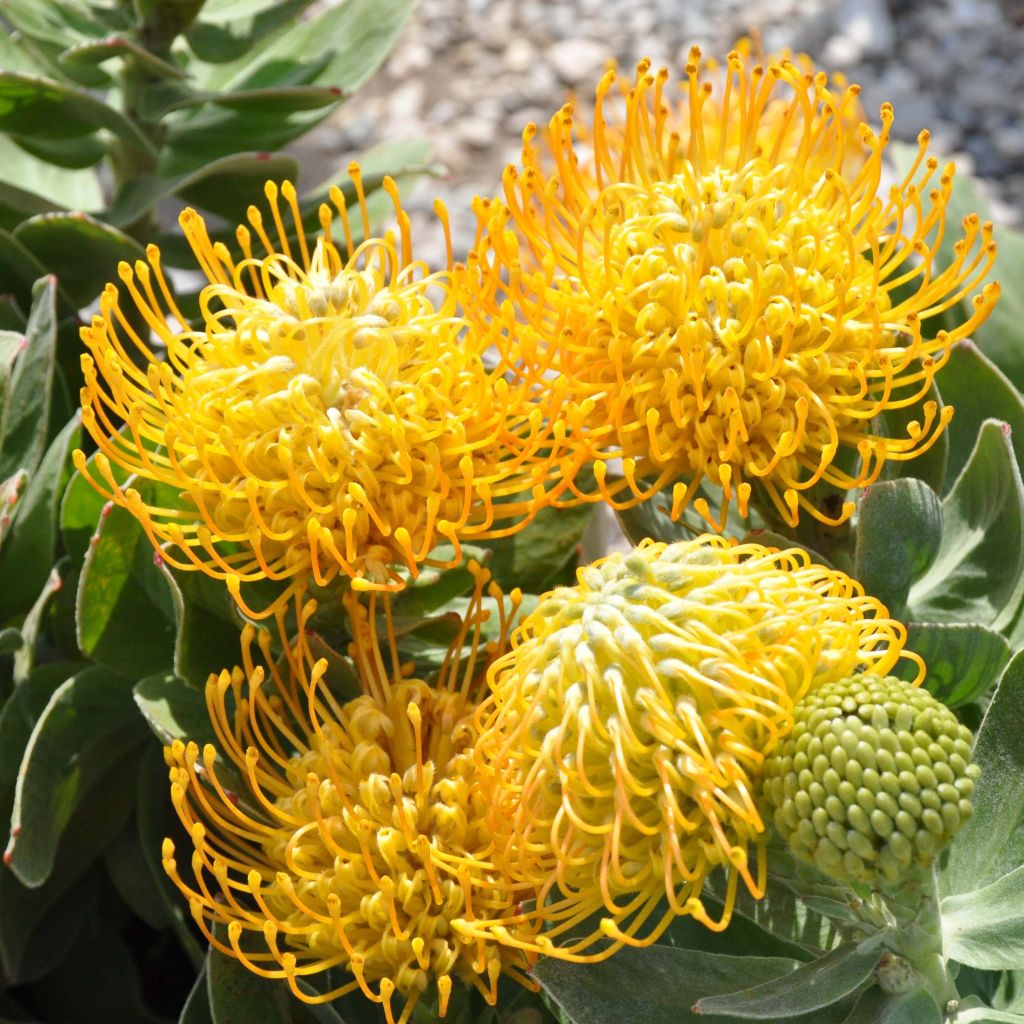

Leucospermum Yellow Carnival - Pelote d'épingles Jaune
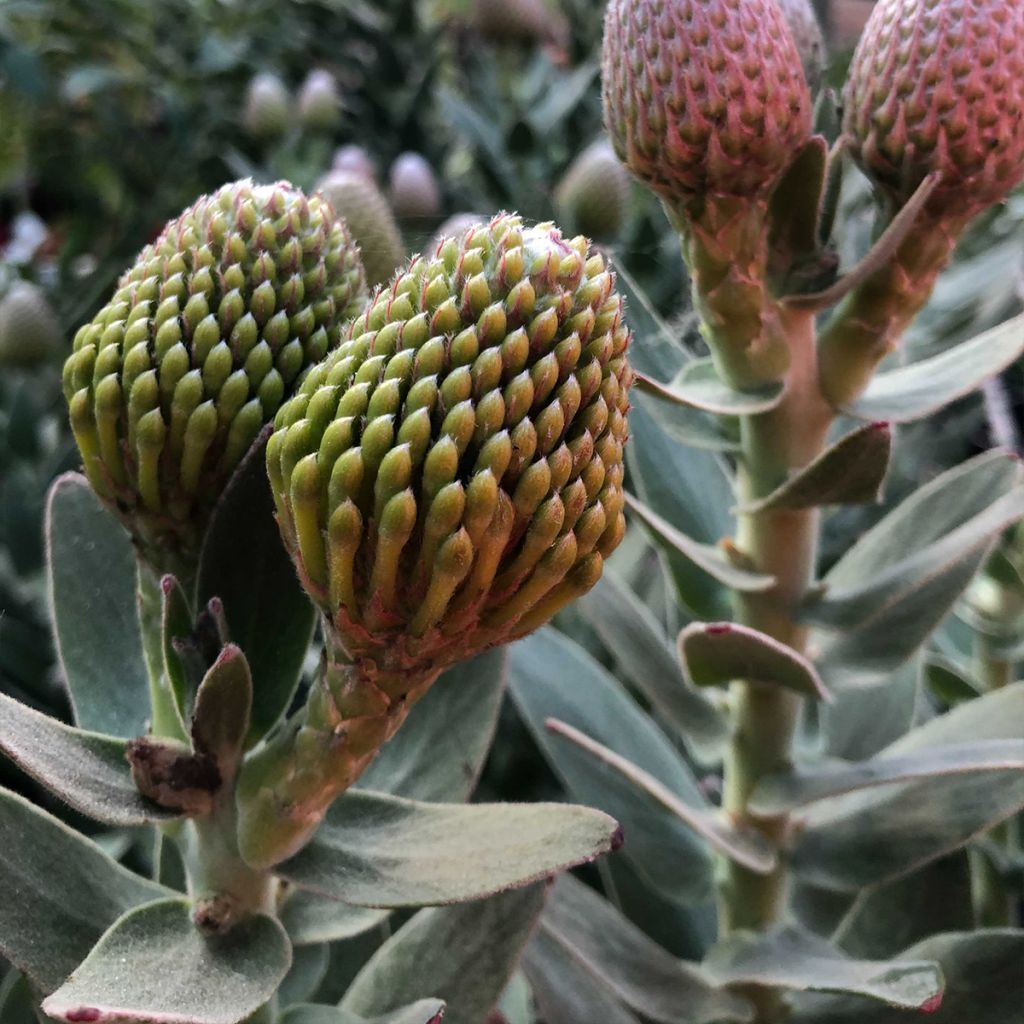

Leucospermum Yellow Carnival - Pelote d'épingles Jaune
Leucospermum cordifolium Yellow Carnival
Leucospermum x cordifolium Yellow Carnival
Pincushion Protea, Pincushion Flower
Received a very beautiful and healthy young plant. I now hope that it will thrive in our climate (and soil) and give me beautiful flowers.
Christelle, 19/03/2021
Order in the next for dispatch today!
Dispatch by letter from €3.90.
Delivery charge from €5.90 Oversize package delivery charge from €6.90.
More information
This item is not available in your country.
Schedule delivery date,
and select date in basket
This plant carries a 24 months recovery warranty
More information
We guarantee the quality of our plants for a full growing cycle, and will replace at our expense any plant that fails to recover under normal climatic and planting conditions.
From €5.90 for pickup delivery and €6.90 for home delivery
Express home delivery from €8.90.

Does this plant fit my garden?
Set up your Plantfit profile →
Description
The Leucospermum cordifolium ‘Yellow Carnaval’, commonly known as the Pin Cushion, is a bush of South-African origin related to proteas. This densely flower-bearing hybrid variety reaches a height of approximately 2 m (6 ft 7 in) at ripeness, and 1.50 m (0 and 4 ft 11 in) in width. Its long spring flowering consists of an abundance of original, bright yellow inflorescences. It is a seaside bush, well adapted to sea sprays as well as sandy and dry soils in summer, where it can become a magnificent specimen, with a strongly exotic habit. Continental gardeners might opt for container cultivation on the terrace, to be stored away in winter.
The Leucospermum cordifolium ‘Yellow Carnival’ belongs to the proteaceae family, just like the Grevillea and the Protea. The Leucospermum is native to South Africa, where it can be found in its natural state in the coastal heathlands and sclerophyllous (dry) forests. It spontaneously develops on sandy, acidic, leached and draining soils, but it adapts very well to both rocky and clayey (non-limey) or more loamy soils. Its aspect and morphology vary a lot depending on its habitat, several subspecies and ecotypes actually exist.
This medium-sized bush, with a bushy and ramified habit, and a rather slow growth, generally forms a rounded crown. It will reach on average 2 m (6 ft 7 in) in height and 1.50 m (4 ft 11 in) in width, depending on the cultivation conditions. Its branches carried on one or several trunks with a corky bark are covered with tough and glabrous leaves, of a medium green. They are densely gathered in a spiral around the stem. The flowering can occur from March to May, depending on the climate. It is not uncommon for the bush to flower more sporadically outside these periods, depending on the region. The generous pin cushion inflorescences are bright and luminous yellow. These flowers are very popular with foraging insects. Most of the Leucospermum species are pyrophytes, meaning that they need the heat of fire to burst their fruits and release the seeds.
The Leucospermum ‘Yellow Carnival’ is an rather sensational plant that does not leave anyone indifferent. Despite its lack of hardiness (up to -5°C for short periods), this bush is quite easy to grow in coastal gardens, in sandy and poor soil, regularly dried out. Particularly adapted to the Mediterranean climate, it copes with difficult, dry to arid soils. It will look good on its own, always in a clear situation to allow it to develop without hindrance. In an exotic garden, it can be associated with the Canary or Madeira Viperine, Puya, Euphorbia characias, Euphorbia mellifera, the Giant Fennel, Leucadendron, Melianthus major, Melaleuca gibbosa, Acacia karoo (Mimosa), palm trees (Trachicarpus fortunei, Sabal minor) or even grevilleas. It adapts well to container cultivation, which allows it to be stored away in winter outside very mild climate regions. Its flowers are appreciated for their long vase life, allowing for the creation of fabulous bouquets in bright colours.
An original root system, adapted to poor and dry soils:
Plants growing in soil poor in nutrients often form a symbiosis with soil fungi that promote the absorption of water and nutrients. But the Proteaceae have chosen another strategy: they develop a large amount of special lateral roots all along their roots. These roots are called proteoid, and are induced by rain, they develop under the pile of dead leaves covering the base of the plant. Rain promotes the decomposition of leaves which results in the release of nutrients. These ephemeral roots generally dry up at the end of the growth period. They have a water and nutrient absorption activity twice as high as the "normal" roots.
Report an error about the product description
Leucospermum cordifolium Yellow Carnival in pictures
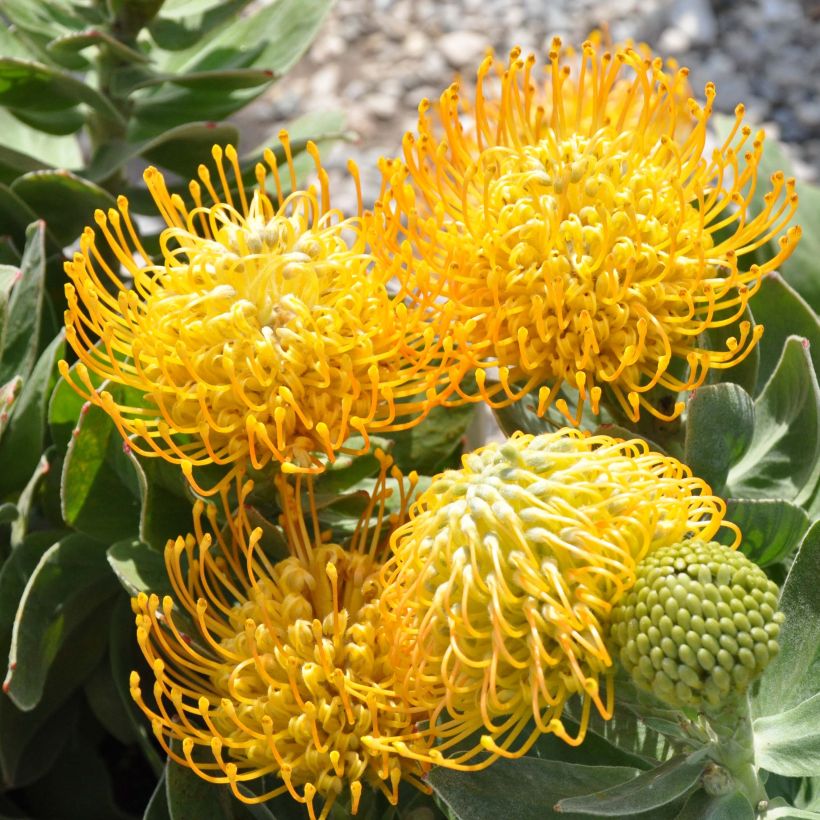

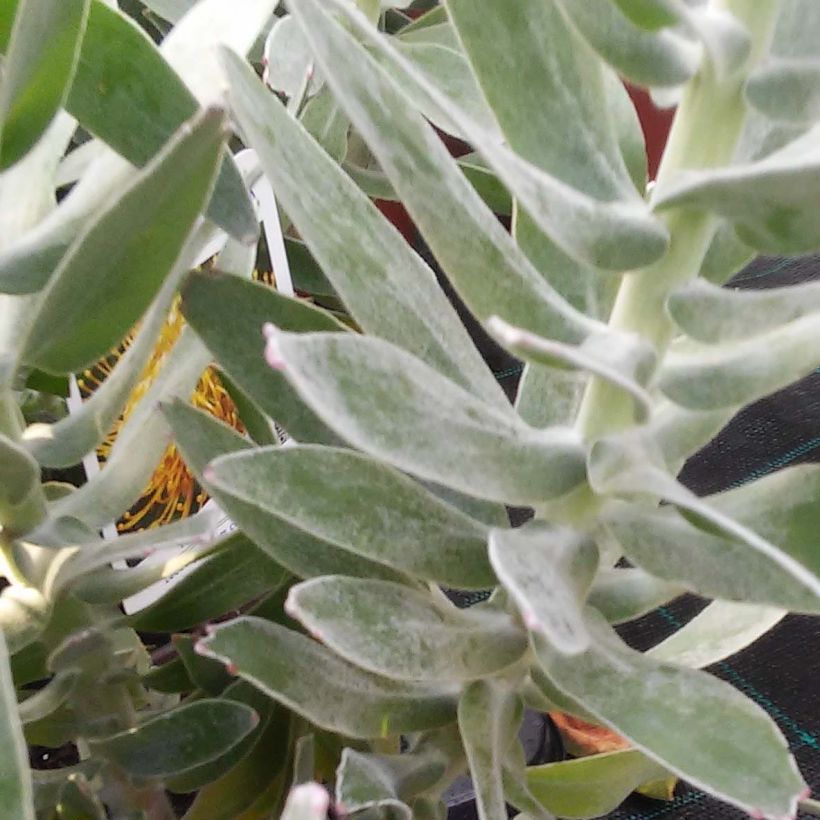

Plant habit
Flowering
Foliage
Botanical data
Leucospermum
x cordifolium
Yellow Carnival
Proteaceae
Pincushion Protea, Pincushion Flower
South Africa
Other Shrubs A to Z
Planting and care
In open ground, in regions spared by severe frost, plant the Leucospermum preferably in spring, in a sunny exposure. This plant is quite tolerant with respect to the soil, but does not appreciate limestone and permanently wet soils. While it prefers a sandy soil with an acid or neutral tendency (pH 6.5-7), it adapts well to loamy soils, or even clay if they are drained and light. Water abundantly in a spaced way (20 l of water every 15 days) to help recovery and promote deep rooting, especially the first 2 summers if the weather remains dry. Stake your young plant for the time necessary for its rooting. Once well established, after 2 or 3 years of cultivation, the Leucospermum grown in open ground does without watering in summer, except in the case of exceptional drought. It perfectly withstands sea spray and wind. Of concern is Phytophthora; a cryptogamic disease that attacks the roots and collar of certain woody plants in soils that are both wet and hot..
Proteaceae are sensitive to excess phosphates and nitrates, so avoid giving too much fertilizer, or even none at all. A supply of dried blood at the foot of the plant, in small doses, in spring, is generally sufficient. If adult plants tolerate occasional frosts of the order of -5°C (23 °F) in dry soil, starting from the stump, young Leucospermum on the other hand should be sheltered from frost during their first years, in a frost-free place in a cool climate or under a winter veil in regions with mild winters.
Indoors, it is important to ensure a good ventilation of the room and avoid atmospheres that are too dry and too hot. A slightly heated veranda or a frost-free greenhouse will be perfect. A plant grown in a pot requires regular but spaced watering. Do not let the pot 'soak' in a saucer full of water, use a pot with a hole in the bottom, taking care to arrange a bed of clay balls or gravel to promote drainage. In winter, watering will be reduced by half compared to normal, however, making sure not to let the root ball dry out completely.
Take your Leucospermum outside after the last frosts, arrange on the surface of the soil a layer of compost low in phosphorus, or a layer of well-decomposed humus, mixed with a little sand.
Planting period
Intended location
Care
-
, onOrder confirmed
Reply from on Promesse de fleurs
Evergreen shrubs
Haven't found what you were looking for?
Hardiness is the lowest winter temperature a plant can endure without suffering serious damage or even dying. However, hardiness is affected by location (a sheltered area, such as a patio), protection (winter cover) and soil type (hardiness is improved by well-drained soil).

Photo Sharing Terms & Conditions
In order to encourage gardeners to interact and share their experiences, Promesse de fleurs offers various media enabling content to be uploaded onto its Site - in particular via the ‘Photo sharing’ module.
The User agrees to refrain from:
- Posting any content that is illegal, prejudicial, insulting, racist, inciteful to hatred, revisionist, contrary to public decency, that infringes on privacy or on the privacy rights of third parties, in particular the publicity rights of persons and goods, intellectual property rights, or the right to privacy.
- Submitting content on behalf of a third party;
- Impersonate the identity of a third party and/or publish any personal information about a third party;
In general, the User undertakes to refrain from any unethical behaviour.
All Content (in particular text, comments, files, images, photos, videos, creative works, etc.), which may be subject to property or intellectual property rights, image or other private rights, shall remain the property of the User, subject to the limited rights granted by the terms of the licence granted by Promesse de fleurs as stated below. Users are at liberty to publish or not to publish such Content on the Site, notably via the ‘Photo Sharing’ facility, and accept that this Content shall be made public and freely accessible, notably on the Internet.
Users further acknowledge, undertake to have ,and guarantee that they hold all necessary rights and permissions to publish such material on the Site, in particular with regard to the legislation in force pertaining to any privacy, property, intellectual property, image, or contractual rights, or rights of any other nature. By publishing such Content on the Site, Users acknowledge accepting full liability as publishers of the Content within the meaning of the law, and grant Promesse de fleurs, free of charge, an inclusive, worldwide licence for the said Content for the entire duration of its publication, including all reproduction, representation, up/downloading, displaying, performing, transmission, and storage rights.
Users also grant permission for their name to be linked to the Content and accept that this link may not always be made available.
By engaging in posting material, Users consent to their Content becoming automatically accessible on the Internet, in particular on other sites and/or blogs and/or web pages of the Promesse de fleurs site, including in particular social pages and the Promesse de fleurs catalogue.
Users may secure the removal of entrusted content free of charge by issuing a simple request via our contact form.
The flowering period indicated on our website applies to countries and regions located in USDA zone 8 (France, the United Kingdom, Ireland, the Netherlands, etc.)
It will vary according to where you live:
- In zones 9 to 10 (Italy, Spain, Greece, etc.), flowering will occur about 2 to 4 weeks earlier.
- In zones 6 to 7 (Germany, Poland, Slovenia, and lower mountainous regions), flowering will be delayed by 2 to 3 weeks.
- In zone 5 (Central Europe, Scandinavia), blooming will be delayed by 3 to 5 weeks.
In temperate climates, pruning of spring-flowering shrubs (forsythia, spireas, etc.) should be done just after flowering.
Pruning of summer-flowering shrubs (Indian Lilac, Perovskia, etc.) can be done in winter or spring.
In cold regions as well as with frost-sensitive plants, avoid pruning too early when severe frosts may still occur.
The planting period indicated on our website applies to countries and regions located in USDA zone 8 (France, United Kingdom, Ireland, Netherlands).
It will vary according to where you live:
- In Mediterranean zones (Marseille, Madrid, Milan, etc.), autumn and winter are the best planting periods.
- In continental zones (Strasbourg, Munich, Vienna, etc.), delay planting by 2 to 3 weeks in spring and bring it forward by 2 to 4 weeks in autumn.
- In mountainous regions (the Alps, Pyrenees, Carpathians, etc.), it is best to plant in late spring (May-June) or late summer (August-September).
The harvesting period indicated on our website applies to countries and regions in USDA zone 8 (France, England, Ireland, the Netherlands).
In colder areas (Scandinavia, Poland, Austria...) fruit and vegetable harvests are likely to be delayed by 3-4 weeks.
In warmer areas (Italy, Spain, Greece, etc.), harvesting will probably take place earlier, depending on weather conditions.
The sowing periods indicated on our website apply to countries and regions within USDA Zone 8 (France, UK, Ireland, Netherlands).
In colder areas (Scandinavia, Poland, Austria...), delay any outdoor sowing by 3-4 weeks, or sow under glass.
In warmer climes (Italy, Spain, Greece, etc.), bring outdoor sowing forward by a few weeks.
